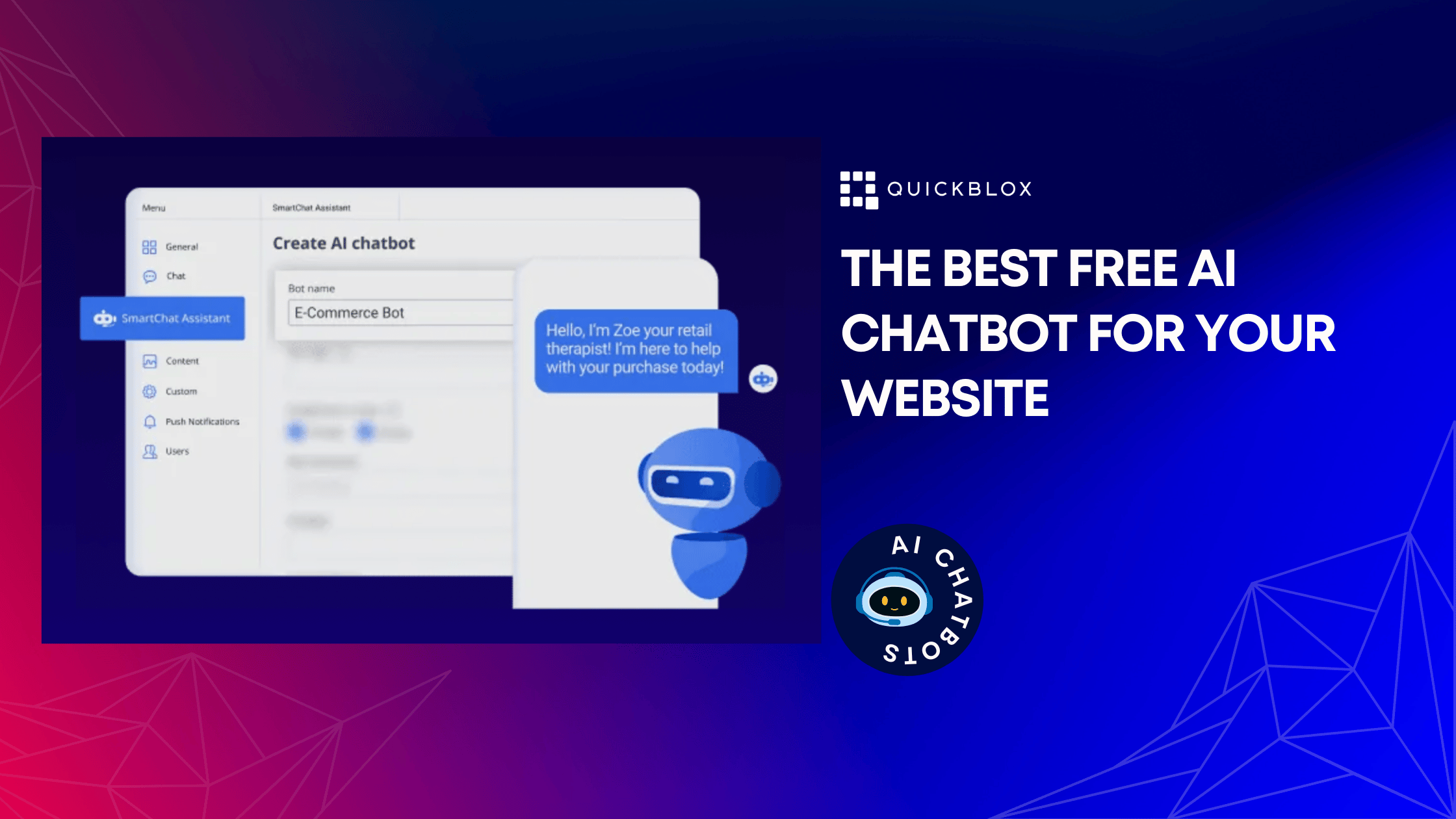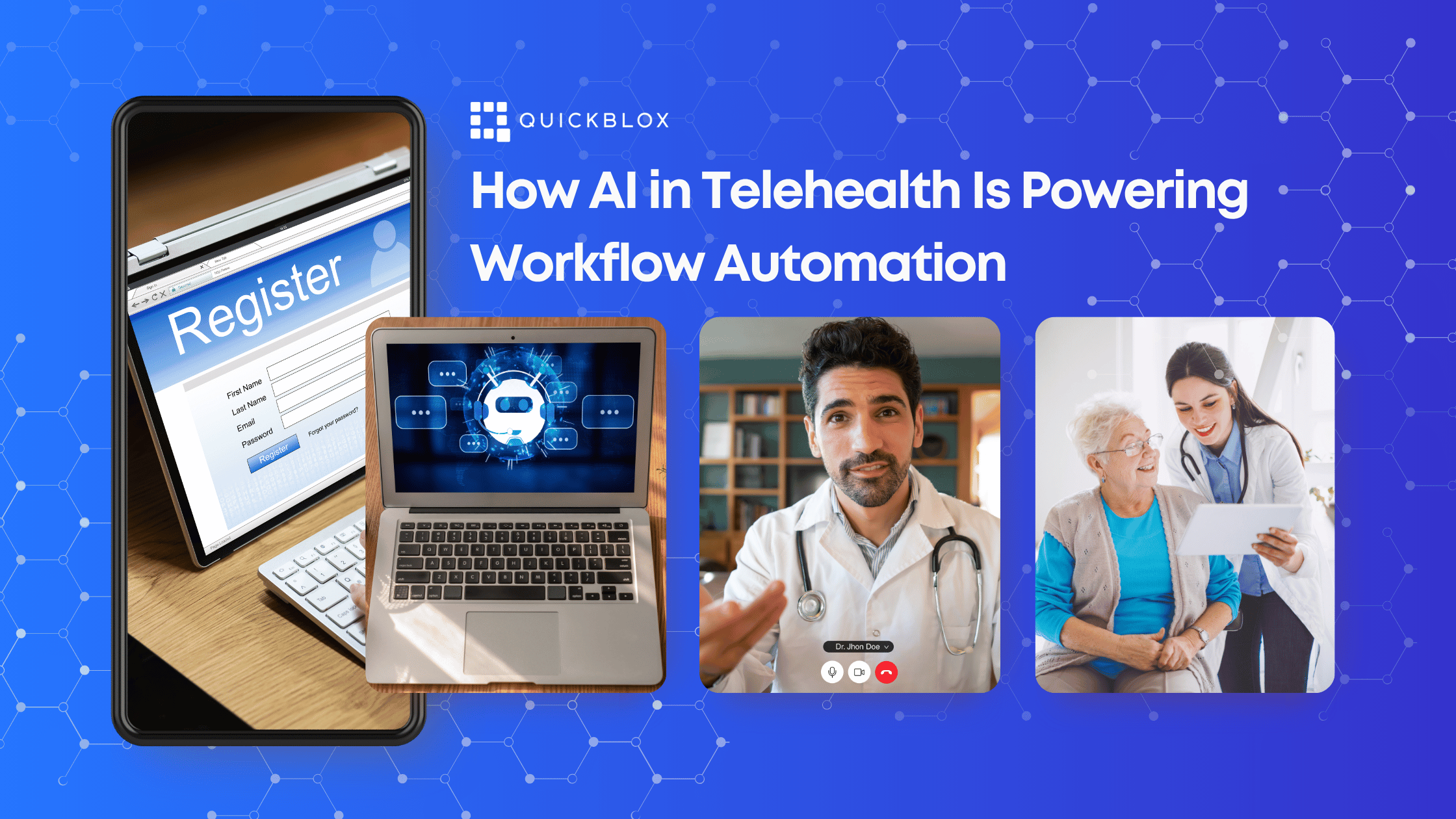
Welcome to the QuickBlox Hacktoberfest Challenge 2024! This year, we invite developers from across the globe to join us in building innovative open-source projects using QuickBlox SDKs, APIs, and AI-powered tools. Whether you’re a beginner or a seasoned developer, this is your chance to showcase your skills, contribute to the open-source community, and win exciting prizes!
Timeline of the Event
Challenge Begins: October 15, 2024
Submission Deadline: November 15, 2024
Prize Claim Deadline: November 20, 2024
Table of Contents
How to get Started
1. Register
Register for Hacktoberfest: You must sign up for the official Hacktoberfest event.
Register for the QuickBlox Hacktoberfest Challenge: Fill out this form to be eligible for prizes in the QuickBlox Challenge.
2. Join Our Discord
Stay connected with the QuickBlox community and get support throughout the event by joining our Discord community.
3. Set Up Your Environment
Before you begin coding, make sure you have all the necessary tools installed.
Install Git
Git is a version control system that allows you to track changes in your code and collaborate with others.
- Download Git:
Go to the Git website and download the latest version of Git for your operating system (Windows, macOS, Linux).
- Install Git:
Follow the instructions in the Git installer. For most users, the default options during installation should be fine.
- Configure Git:
After installation, configure your username and email address, which will be associated with your commits.
git config --global user.name "Your Name"
git config --global user.email "your-email@example.com"
Install Node.js (Optional)
If your project involves JavaScript-based development, particularly with QuickBlox SDKs, you’ll need Node.js.
- Download Node.js:
Visit the Node.js website and download the recommended version for your system.
- Install Node.js:
Follow the installation guide specific to your OS. After installation, verify Node.js by running:
node -v
You should see the installed version number.
- Install NPM (Node Package Manager):
NPM is automatically installed with Node.js. Verify the installation:
npm -v
Install Visual Studio Code (VS Code)
VS Code is a popular code editor that is great for development.
- Download VS Code:
Go to the Visual Studio Code website and download the latest version for your operating system.
- Install VS Code:
Follow the installation instructions and customize it with extensions to suit your project (like GitLens or Prettier).
- Install Git in VS Code:
Git is integrated into VS Code. Once you open a project folder in VS Code, you will see the Git option in the activity bar to manage your code repository.
4. Create a Project Using QuickBlox
Once your environment is ready, it’s time to create your project using QuickBlox tools.
- Explore QuickBlox Products:
Choose from a variety of QuickBlox tools, SDKs, and services to build your project:
AI-Driven Solutions
SmartChat Assistant: An AI-powered chat assistant that enhances user engagement with intelligent conversation capabilities and easy setup.
SmartChat Assistant Overview
AI Extensions: A set of pre-built AI tools that provide quick integration of AI functionalities into your apps, making development faster and smarter.
AI Extensions Overview
Developer Tools
JavaScript SDK: A comprehensive SDK to integrate QuickBlox services into web applications using JavaScript.
JavaScript Quick Start
Android SDK: SDK for building Android applications with QuickBlox communication features.
Android Quick Start
React Native SDK: Integrate QuickBlox into your React Native mobile apps with this robust SDK.
React Native Quick Start
Flutter SDK: For Flutter developers looking to implement QuickBlox services in their applications.
Flutter Quick Start
iOS SDK: Easily integrate QuickBlox features into iOS applications with this SDK.
iOS Quick Start
React UI Kit: A pre-built collection of UI components for React applications to accelerate development.
React UI Kit Overview
Android UI Kit: Pre-designed UI components to help Android developers quickly integrate QuickBlox services.
Android UI Kit
iOS UI Kit: Ready-made UI elements for fast integration of QuickBlox services in iOS apps.
iOS UI Kit Overview
Server API: Server API for backend integration to manage and scale QuickBlox services.
Server API Overview
Ready-Made Products
Q-Consultation: A ready-made consultation solution with features like live queue, appointment scheduling, chat, video calling, and more – also available as an open source version.
Q-Consultation Overview
Explore our QuickBlox documentation for additional resources and support.
- Deploy your project: [Optional]
Use your preferred platform to host your project (e.g., GitHub Pages, Heroku, Netlify).
- Create a demo video: [Mandatory]
Record a short video demonstrating your project’s functionality.
- Upload your project to GitHub:
Make your code publicly accessible in a GitHub repository. Be sure to follow best practices for documentation.
Here’s a concise step-by-step guide to uploading a project to GitHub from your local machine:
Step-by-Step Guide to Upload a Project to GitHub
- Create a New Repository on GitHub:
– Log in to GitHub
– Click the “+” icon and select “New repository.”
– Fill in repository details and click “Create repository.”
- Navigate to Your Project Directory:
cd /path/to/your/project
- Initialize Git:
git init
- Add Your Project Files:
git add .
- Commit Your Changes:
git commit -m "Initial commit"
- Connect to Your GitHub Repository:
git remote add origin
- Push Your Code to GitHub:
git push -u origin master # or use 'main' if applicable
Best Practices for Documentation
- README.md: Overview, installation, and usage.
- LICENSE: Clarify usage rights for open-source projects.
- CONTRIBUTING.md: Guidelines for contributions.
- Issue Templates: Help users report bugs or request features.
Summary of Git Commands:
cd /path/to/your/project
git init
git add .
git commit -m "Initial commit"
git remote add origin
git push -u origin master # or git push -u origin main
How to Submit Your Project
Once your project is ready, follow these steps to submit it:
Step 1: Fork the QuickBlox Repository
git clone
Step 2: Create a New Branch
- Navigate to the cloned repo:
cd quickblox-hacktoberfest-challenge
Create a new branch for your project:
git checkout -b your-project-title
Step 3: Add Your Submission
- Create a submission file:
– Navigate to the submissions/ directory.
– Copy the template_submission.md file and rename it to your project title:
cp submissions/template_submission.md submissions/your-project-title.md
Fill out the submission file:
– Include your project details, GitHub repo link, and a brief description.
Step 4: Commit and Push Changes
- Add and commit your changes:
git add submissions/your-project-title.md
git commit -m "Added project: your-project-title"
Push the branch to your GitHub fork:
git push origin your-project-title
Step 5: Create a Pull Request (PR)
- Submit a Pull Request:
– Navigate to your fork on GitHub and click the “Compare & pull request” button.
– Provide a brief explanation of your project.
– Submit the PR to the QuickBlox Hacktoberfest Challenge repo.
How to Claim Your Prize?
Once your Pull Request has been successfully merged, submit your details using this form to claim your prize. Your prize will be shipped to you as soon as possible.
Rules of Conduct
All participants must adhere to the Rules and the Code of Conduct to maintain a positive, inclusive, and respectful environment.
FAQs
Do I have to use QuickBlox products?
Yes, QuickBlox products or SDKs must be used as part of your project.
Can I use other technologies in my project?
Absolutely! Feel free to use other tools or technologies as long as QuickBlox features are incorporated.
How will my project be evaluated?
Submissions will be judged based on creativity, functionality, and the effective use of QuickBlox.
We can’t wait to see what amazing projects you come up with! If you have any questions, feel free to join our Discord community.








